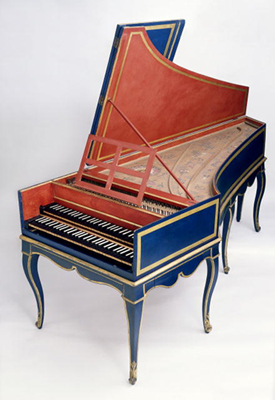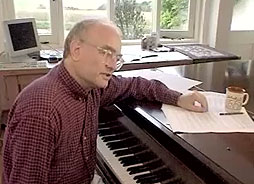
The appearance of the two instruments is also different. The harpsichord may have two keyboards, which may be coupled to produce a louder sound. The body of the instrument
may be carved or painted in artistic ways. Although pianos can be slightly different, the general appearance is a basic black.


Now to the point of this room, the blurring of historical boundaries.

English composer John Rutter (b. 1945) has created a great deal of popular sacred music and his ensemble, the Collegium Singers, has recorded many albums of his appealing style. In his composition, Suite Antique for Flute, Harpsichord, and Strings, he gives a 17th century sound to his music by the usage of the harpsichord. Here are some samples of the result.
Listen to the Rondeau Movement
If you need to leave, Go to initial page of site.
If you are interested in advertising a music-related business in the pages of the classroom, please send us an e-mail regarding rates by clicking here.